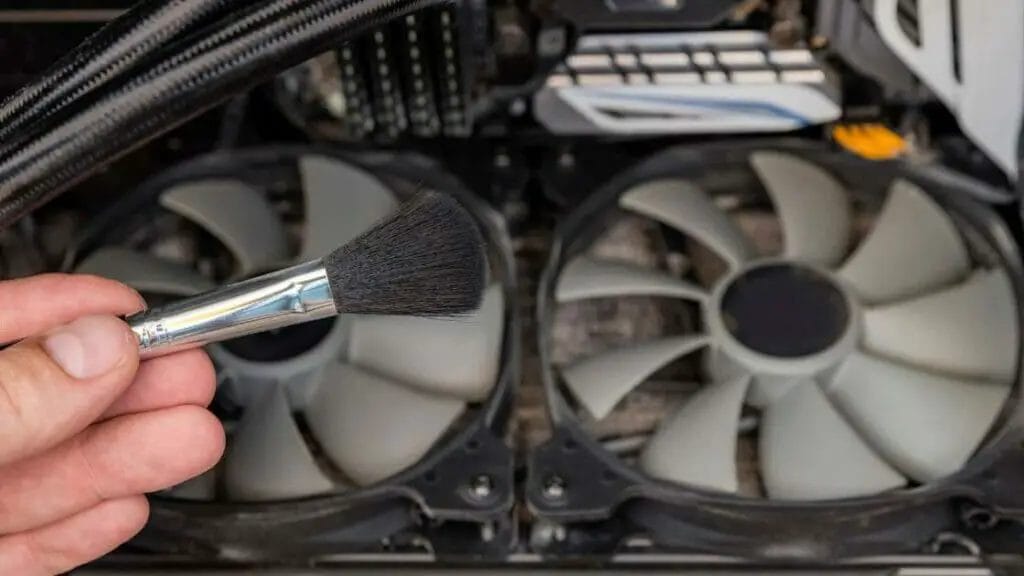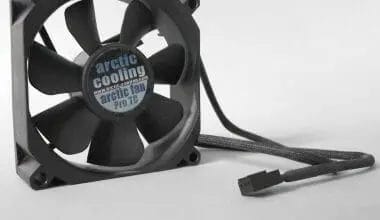Do you feel that dread slowly spreading all over you when you start hearing noise coming from your PC fan?

You are not alone, a lot of us feel that way as PC noise is usually an early warning sign of expensive repairs or component replacement since a broken fan means trapped heat that results in overheating and breaking down of parts.
But fear not, because I’m here to help you fix it.
In this guide, we’ll explore the most common causes of fan noise during startup and provide you with effective solutions to silence that sound once and for all.
From cleaning the fan to adjusting the power settings, we’ll cover all the bases to ensure your computer starts up quietly and smoothly.

Understanding fan noise in PCs
Before we delve into the solutions, it’s important to understand why fan noise occurs in PCs during startup.
The fan noise is primarily caused by two factors: heat and airflow.
When you turn on your computer, the components start generating heat, and the fans kick in to cool them down.
However, if the fans are dirty or there are hardware issues, they may produce excessive noise.
Additionally, improper airflow within the system can also contribute to fan noise. Now that we have a basic understanding, let’s move on to identifying the source of the fan noise.
Common causes of fan noise during startup
There are several common causes of fan noise during startup.
First, dust and debris can accumulate on the fans over time, causing them to work harder and create more noise.
Second, fans can become faulty or worn out, resulting in abnormal noise.
Third, improper power settings in the BIOS can cause the fans to run at full speed unnecessarily, creating unnecessary noise.
Lastly, certain software applications can also put a strain on the system, causing the fans to work harder and generate noise.
How to identify the source of fan noise
Identifying the source of fan noise is crucial for effective troubleshooting.
To begin, you can physically inspect the fans for any visible dust or debris. If you notice an accumulation, it’s time to clean them.
Next, listen closely to the noise and try to determine if it’s coming from a particular fan or component. You can use software tools to monitor the fan speeds and temperatures to pinpoint the issue.
Additionally, pay attention to any error messages or warnings displayed during startup, as they can provide valuable insights.
Once you have identified the source, it’s time to troubleshoot and fix the problem.
Troubleshooting fan noise during startup
- Turn off your computer and unplug it from the power source. Use compressed air or a soft brush to gently remove the dust and debris from the fans.
Be careful not to damage any components while cleaning.
- If the noise persists after cleaning, it might be due to a faulty fan or component. In such cases, consider replacing the affected part to eliminate the noise.
- If the fan noise is caused by improper power settings, you can adjust them in the BIOS.
- Lastly, certain software applications can put a strain on the system, causing the fans to work harder. Closing unnecessary applications or updating outdated software can help reduce fan noise.

Cleaning the fans for better performance
One of the most effective ways to reduce fan noise during startup is by cleaning the fans.
Over time, dust and debris can accumulate on the fan blades, causing them to become unbalanced and work harder. This not only creates noise but also reduces the cooling efficiency.
To clean the fans, follow these steps:
- Turn off your computer and unplug it from the power source.
- Open the case and locate the fans. They are usually found near the CPU and on the graphics card.
- Use compressed air or a soft brush to gently remove the dust and debris from the fan blades.
- Be careful not to damage any components while cleaning.
- Once the fans are clean, close the case and plug in your computer.
Cleaning the fans regularly can improve their performance, reduce noise, and prolong their lifespan. It’s a simple yet effective solution to fix fan noise during startup.
Replacing faulty fans or components
If cleaning the fans doesn’t solve the fan noise issue, it’s possible that one or more fans or components are faulty.
Faulty fans can create excessive noise and may not cool the system properly.
To replace a faulty fan or component, follow these steps:
- Identify the specific fan or component that is causing the noise.
- Consult the user manual or manufacturer’s website to find a compatible replacement.
- Turn off your computer and unplug it from the power source.
- Open the case and locate the faulty fan or component.
- Disconnect any cables or connectors attached to the fan or component.
- Remove the faulty fan or component and install the new one.
- Reconnect the cables or connectors and close the case.
- Plug in your computer and turn it on to check if the fan noise is resolved.
Replacing faulty fans or components can effectively eliminate fan noise during startup and ensure proper cooling of your PC.
Optimizing fan settings in BIOS
In some cases, the fan noise during startup can be caused by improper power settings in the BIOS.
The BIOS controls various aspects of your computer’s hardware, including the fan speeds.
To optimize the fan settings in the BIOS, follow these steps:
- Restart your computer and enter the BIOS by pressing the designated key during startup (usually Del, F2, or F10).
- Navigate to the section that controls the fan settings. It may be under “Power Management” or “Hardware Monitor.”
- Adjust the fan settings to your preference. You can set the fan speeds to “Silent” or “Quiet” mode for reduced noise.
- Save the changes and exit the BIOS.
- Restart your computer and check if the fan noise during startup has been reduced.
Software solutions to reduce fan noise
In addition to hardware-related solutions, there are also software solutions available to reduce fan noise during startup.
Certain software applications can put a strain on the system, causing the fans to work harder and generate noise.
By closing unnecessary applications or updating outdated software, you can help reduce fan noise.
Additionally, there are software tools available that allow you to monitor and control the fan speeds manually. These tools enable you to adjust the fan speeds according to your preference, thereby reducing noise.
However, be cautious when using third-party software and ensure that they are reputable and compatible with your system.
Preventing future fan noise issues
Now that you have fixed the fan noise issue, it’s essential to take preventive measures to avoid future occurrences.
Regularly cleaning the fans and keeping the system free from dust and debris is crucial for maintaining optimal performance and reducing noise.
Additionally, ensure that your computer is placed in a well-ventilated area to promote better airflow.
Avoid blocking the vents or placing the computer on surfaces that can hinder air circulation.
Lastly, keep your software and drivers up to date to prevent any compatibility issues that could lead to excessive fan noise during startup.

